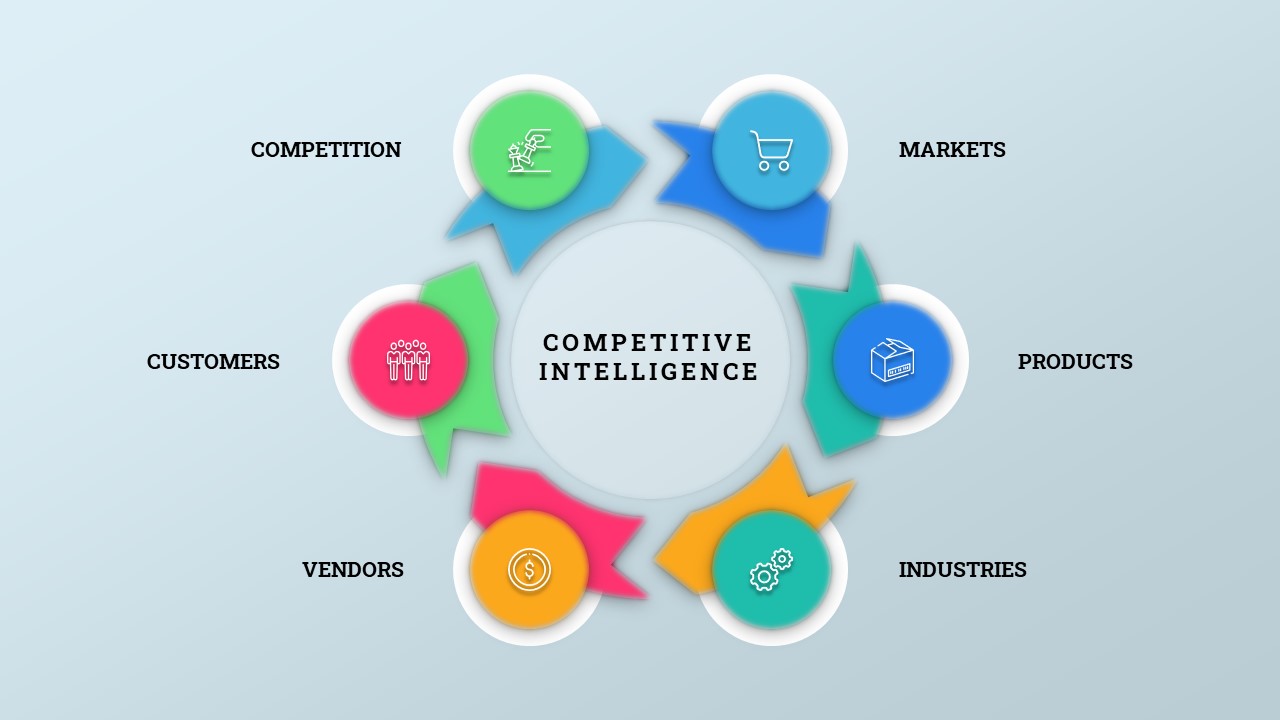BI vs. Competitive Intelligence: What’s the Difference? This intriguing question unveils a realm of insights where data-driven decision-making meets the art of strategic foresight. Imagine a world where businesses harness the power of information not just to understand their internal operations but to anticipate and outmaneuver their competitors. This exploration delves into the essence of Business Intelligence (BI) and Competitive Intelligence (CI), two pivotal concepts that, while intertwined, serve distinct purposes in shaping a company’s success.
BI focuses on analyzing internal data to enhance operational efficiency and drive informed decisions, utilizing tools and techniques that transform raw information into actionable insights. On the other hand, Competitive Intelligence thrives on external data, gathering insights about competitors and market trends to forge strategies that place a company ahead of the curve. Understanding these differences is crucial for businesses aiming to leverage both internal strengths and external opportunities.
In a world overflowing with information and opinion, the ability to persuade can be your most powerful asset. Whether you’re trying to inspire a team, sell a product, or simply convince a friend to try a new restaurant, mastering the art of persuasion can open doors and create opportunities. But what exactly is the craft of persuasion, and how can you harness it to your advantage?

Let’s delve into this intriguing topic, exploring various techniques and strategies that can transform your persuasive prowess from mediocre to exceptional.
Understanding Persuasion: The Psychology Behind Influence
Persuasion is not merely about convincing someone to agree with your viewpoint; it’s about understanding their perspective and addressing their needs. At its core, persuasion is rooted in psychology. By tapping into the emotions, motivations, and desires of others, you can effectively guide them toward a desired outcome. Here are some key psychological principles that underpin the art of persuasion:
- Reciprocity: People are inclined to return favors. If you help someone, they often feel compelled to help you in return. Use this to your advantage by first offering something valuable—be it information, support, or even a simple compliment.
- Scarcity: The perception of limited availability increases desire. Highlighting the scarcity of an item or opportunity can create a sense of urgency, prompting quicker decision-making.
- Authority: Individuals are more likely to be influenced by those they perceive as credible and knowledgeable. Establishing yourself as an authority on a topic can enhance your persuasive power.
- Consistency: People prefer to act consistently with their previous commitments. If you can get someone to make a small commitment first, they’re more likely to agree to larger requests later.
- Social Proof: People often look to others for guidance on how to act. Showcasing testimonials or case studies can help others feel more comfortable following your lead.
The Techniques of Persuasion: Practical Strategies to Implement
Now that we’ve explored the psychology behind persuasion, let’s look at some practical techniques you can employ to make your arguments more compelling.
1. Build Rapport
Creating a connection with your audience is crucial. Use active listening to show that you value their opinions and feelings. Mirror their body language and speech patterns subtly, which creates a sense of familiarity and trust. When people feel comfortable with you, they’re more open to your ideas.
2. Craft a Compelling Narrative
Humans are wired for stories. A well-told narrative can engage emotions and make your message more relatable and memorable. Structure your argument like a story: introduce a conflict, highlight the journey, and reveal the resolution. This not only captivates your audience but also makes your case more persuasive.
3. Use Clear and Concise Language, BI vs. Competitive Intelligence: What’s the Difference?
Clarity is key in persuasion. Avoid jargon and overly complex sentences that may confuse your audience. Instead, opt for straightforward language that clearly conveys your message. The easier you make it for your audience to understand your point, the more likely they are to agree with you.
4. Appeal to Emotions
While facts and figures are essential, emotional appeals often resonate more deeply with people. Use anecdotes, imagery, and emotionally charged language to evoke feelings that align with your message. By connecting on an emotional level, you can inspire action and foster lasting impressions.
5. Address Objections Proactively
Anticipate objections and address them before they arise. By acknowledging potential counterarguments and providing thoughtful responses, you demonstrate that you’ve considered different perspectives. This not only builds credibility but also helps to alleviate concerns your audience may have.
The Power of Non-Verbal Communication: BI Vs. Competitive Intelligence: What’s The Difference?
Interestingly, persuasion isn’t just about what you say; it’s also about how you say it. Non-verbal cues play a significant role in how your message is received. Consider these aspects:
- Eye Contact: Maintaining appropriate eye contact can foster trust and confidence. It shows that you are engaged and sincere.
- Body Language: Open and inviting body language encourages receptiveness. Avoid crossing your arms or turning away, as these can signal defensiveness or disinterest.
- Facial Expressions: Your facial expressions should align with your message. A warm smile can enhance your approachability, while a serious expression can underscore the importance of your argument.
Practicing Persuasion: Real-World Applications
Now that you have a toolkit of persuasive techniques, how can you apply them in real-world scenarios? Here are a few examples:
In the Workplace
Whether you’re pitching a project to a supervisor or negotiating with a colleague, employ the techniques of persuasion to achieve your goals. Build rapport with your team members, present compelling data, and address any concerns they may have. A persuasive approach can lead to more effective collaboration and successful outcomes.
In Sales
Sales is fundamentally about persuasion. Use storytelling to illustrate how your product solves a problem or enhances the customer’s life. Highlight testimonials and social proof to build credibility. Most importantly, listen to your customers’ needs and tailor your pitch accordingly.
In Everyday Life
Even in casual conversations, the ability to persuade can enhance your interactions. From convincing friends to join you for dinner to discussing political views, employing persuasive techniques can foster better communication and understanding.
Conclusion: The Craft of Persuasion as a Lifelong Skill
Persuasion is an art that can be developed through practice and intention. By understanding the psychological principles behind influence and applying practical techniques, you can enhance your ability to persuade in various aspects of life. Remember, effective persuasion isn’t about manipulation; it’s about fostering genuine connections and encouraging mutual understanding. So, step into your role as a persuasive communicator and watch as you unlock new opportunities and build stronger relationships.



